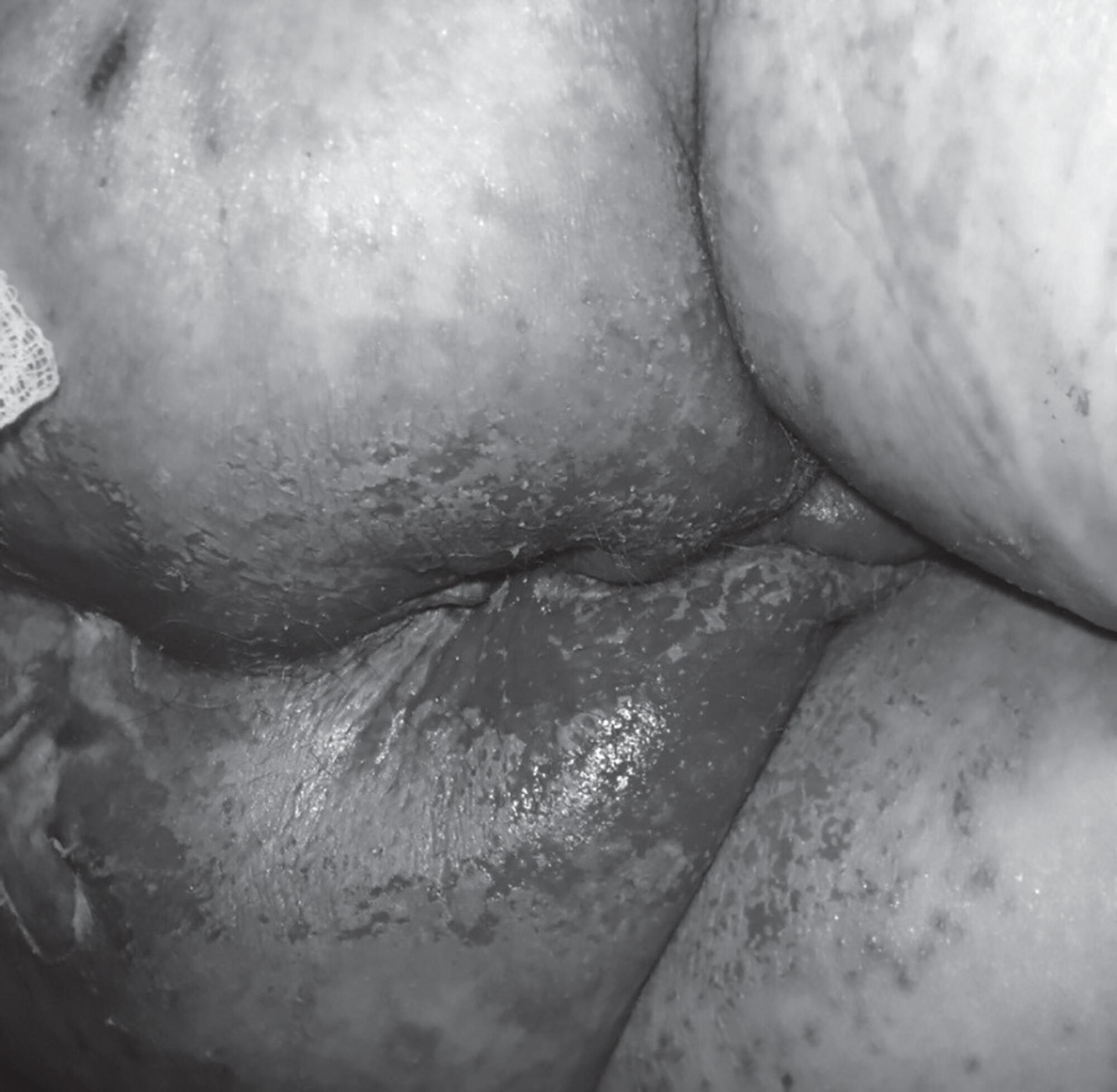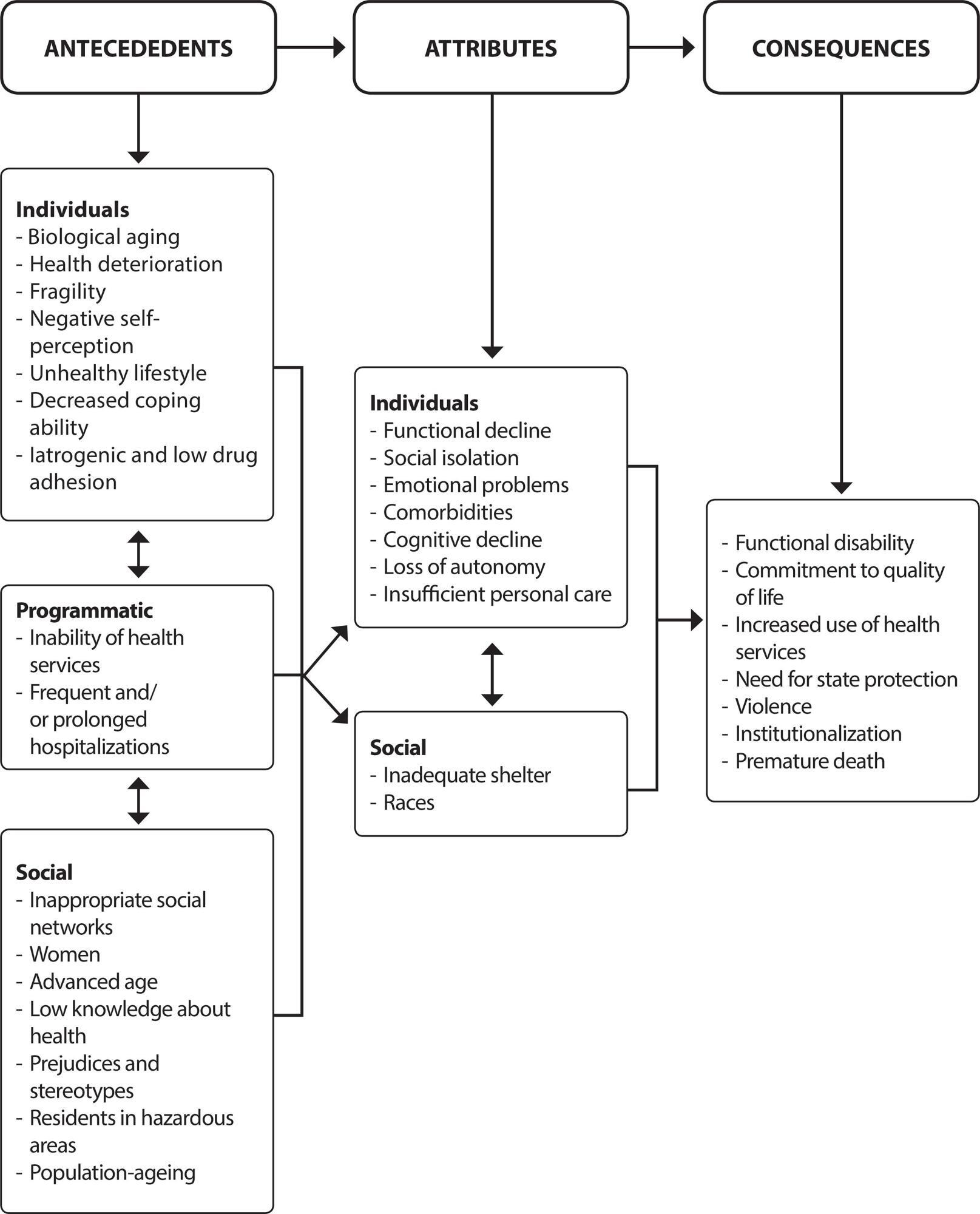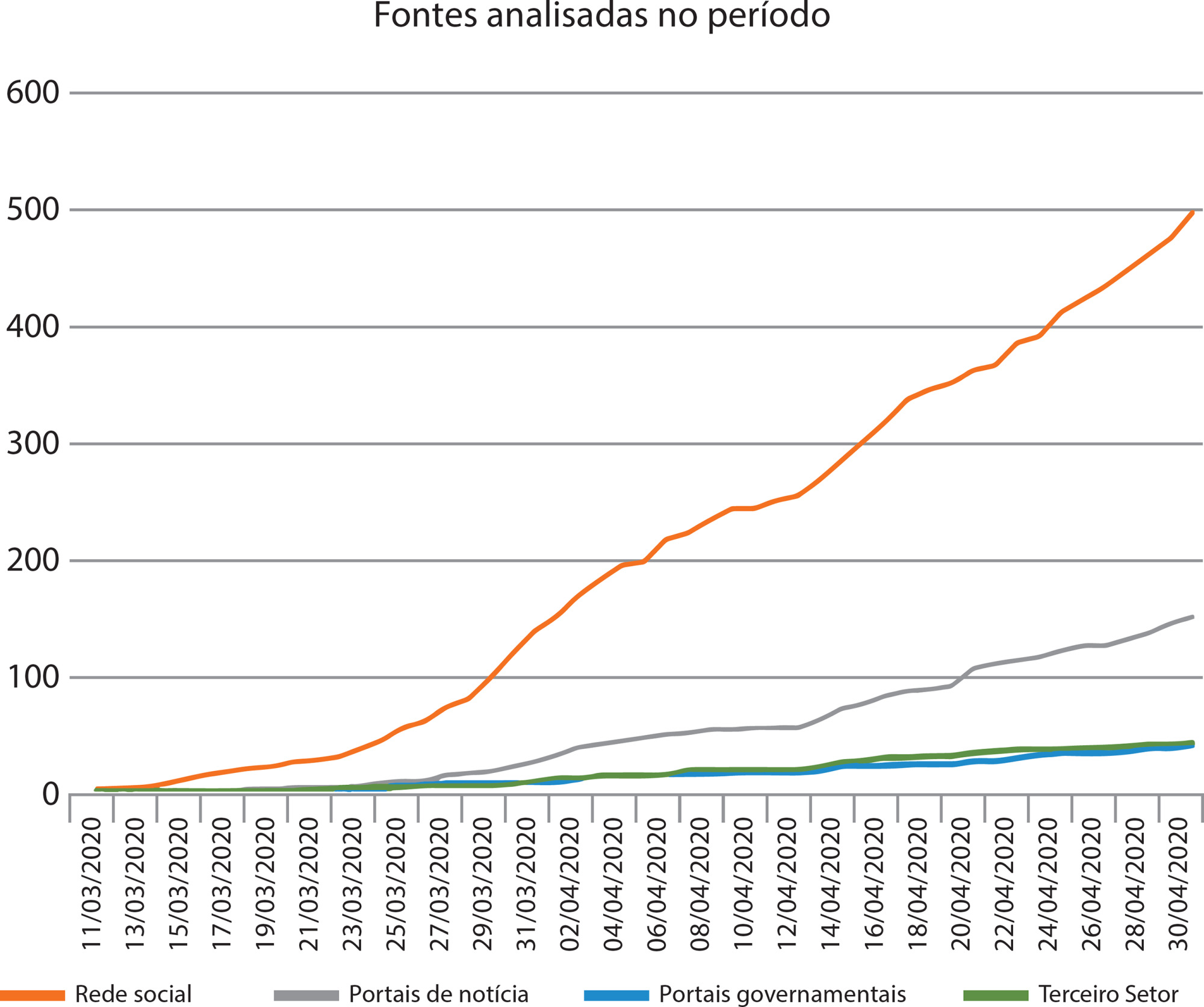-
ARTÍCULO ORIGINAL09/05/2022
Wise Infant Development®: creación de un software para la enseñanza de la educación en enfermería pediátrica
Revista Brasileira de Enfermagem. 2022;75(5):e20210466
Resumen
ARTÍCULO ORIGINALWise Infant Development®: creación de un software para la enseñanza de la educación en enfermería pediátrica
Revista Brasileira de Enfermagem. 2022;75(5):e20210466
DOI 10.1590/0034-7167-2021-0466
Visualizações0RESUMEN
Objetivos:
crear una aplicación informática para la enseñanza de la enfermería en la evaluación del desarrollo infantil.
Métodos:
investigación metodológica aplicada, desarrollada en tres etapas: análisis, diseño y desarrollo. Se han adoptado las características de calidad del producto de las normas ISO/IEC 25010. El lenguaje de programación utilizado fue JavaScript. El software educativo se desarrolló en base a una teoría cognitiva constructivista.
Resultados:
fue posible crear el software a partir de las siguientes métricas de calidad: idoneidad funcional, confiabilidad, usabilidad, eficiencia de desempeño, compatibilidad, seguridad, mantenibilidad y portabilidad. La tecnología aborda el desarrollo infantil en los dominios físico, cognitivo y psicosocial y cómo esta evaluación debe llevarse a cabo en Brasil. El software cuenta con pruebas previas y posteriores, 5 módulos de aprendizaje, emisión de certificados, soporte para dudas y panel administrativo. Consideraciones Finales: el software se suma a las herramientas existentes para monitorear el desarrollo infantil, facilitando la adquisición de conocimientos por parte de los estudiantes en la promoción de la salud infantil.
Palavras-chave: Desarrollo InfantilEducación en EnfermeríaEnfermería PediátricaProgramas InformáticosTecnologia EducacionalVer mais -
REFLEXIÓN09/05/2022
Universal health system based on Primary Care and advanced practice nursing
Revista Brasileira de Enfermagem. 2022;75(5):e20210403
Resumen
REFLEXIÓNUniversal health system based on Primary Care and advanced practice nursing
Revista Brasileira de Enfermagem. 2022;75(5):e20210403
DOI 10.1590/0034-7167-2021-0403
Visualizações0Ver maisABSTRACT
Objective:
To reflect on advanced practice nursing in Primary Health Care considering the complexity of the Brazilian health system.
Methods:
Reflective study, based on the document “Expanding the role of nurses in Primary Health Care” and anchored in the literature and critical analysis of the authors.
Results:
Due to the complexity of the Unified Health System — in terms of infrastructure, human resources, funding — it is important for Brazil to carry out its own systematic process of discussion on the implementation of advanced practice nursing, considering the context of the current health care model, to define the role of this practice according to the characteristics of a universal health system and not a universal health coverage. Final considerations: The expansion of the workforce and the insertion of advanced practice nursing in Brazilian Primary Health Care needs to happen with greater recognition and incentives for the actions performed at this level of care. For example, they must occur through integration between professionals and the community in health promotion actions, with the availability of appropriate technologies for the work, in order to guarantee the quality and resolution of Primary Health Care.
-
ARTÍCULO ORIGINAL09/05/2022
Beyond technology: Can artificial intelligence support clinical decisions in the prediction of sepsis?
Revista Brasileira de Enfermagem. 2022;75(5):e20210586
Resumen
ARTÍCULO ORIGINALBeyond technology: Can artificial intelligence support clinical decisions in the prediction of sepsis?
Revista Brasileira de Enfermagem. 2022;75(5):e20210586
DOI 10.1590/0034-7167-2021-0586
Visualizações0Ver maisABSTRACT
Objective:
To analyze the critical alarms predictors of clinical deterioration/sepsis for clinical decision making in patients admitted to a reference hospital complex.
Methods:
An observational retrospective cohort study. The Machine Learning (ML) tool, Robot Laura®, scores changes in vital parameters and lab tests, classifying them by severity. Inpatients and patients over 18 years of age were included.
Results:
A total of 122,703 alarms were extracted from the platform, classified as 2 to 9. The pre-selection of critical alarms (6 to 9) indicated 263 urgent alerts (0.2%), from which, after filtering exclusion criteria, 254 alerts were delimited for 61 inpatients. Patient mortality from sepsis was 75%, of which 52% was due to sepsis related to the new coronavirus. After the alarms were answered, 82% of the patients remained in the sectors.
Conclusions:
Far beyond technology, ML models can speed up assertive clinical decisions by nurses, optimizing time and specialized human resources.
-
ARTÍCULO ORIGINAL09/05/2022
Cardiovascular risk among nursing workers: a cross-sectional study
Revista Brasileira de Enfermagem. 2022;75(4):e20210305
Resumen
ARTÍCULO ORIGINALCardiovascular risk among nursing workers: a cross-sectional study
Revista Brasileira de Enfermagem. 2022;75(4):e20210305
DOI 10.1590/0034-7167-2021-0305
Visualizações0Ver maisABSTRACT
Objective:
to assess cardiovascular risk among nursing workers at a public hospital.
Method:
a cross-sectional study, with 324 nursing workers, using a questionnaire composed of two information blocks. The first covered issues related to sociodemographic and occupational and health characteristics, and the second, the Revised Framingham Risk Score (FRS), to stratify cardiovascular risk. To assess work-related psychosocial stress, the Swedish Social Control Demand Scale was used.
Results:
the most prevalent modifiable risk factor for CVDs was waist circumference (75.9%), followed by overweight (43.8%), obesity (29.3%), alcohol consumption (21.9%), lipoprotein cholesterol low density (LDL) > 130 (20.7%) and hypertension (20.4%)
Conclusion:
it was found that 96% of workers had a low risk of developing cardiovascular disease in the next ten years, and male workers aged >40 years with shorter working hours are more likely to have cardiovascular disease.
-
ARTÍCULO ORIGINAL09/05/2022
Factors associated with the skills of informal caregivers in home care
Revista Brasileira de Enfermagem. 2022;75(4):e20210744
Resumen
ARTÍCULO ORIGINALFactors associated with the skills of informal caregivers in home care
Revista Brasileira de Enfermagem. 2022;75(4):e20210744
DOI 10.1590/0034-7167-2021-0744
Visualizações0Ver maisABSTRACT
Objective:
To identify factors associated with cognitive, emotional, psychomotor, and relational skills of informal caregivers in home care.
Methods:
A cross-sectional study carried out with a sample of 216 informal caregivers residing in a municipality in the state of Paraná. Data collection took place between February and July 2019, with an instrument developed and validated to assess the skills of informal caregivers. Descriptive and inferential analyses were used.
Results:
The factors associated with a greater competence of informal caregivers were being female, having training in the field, and having more than five years home care experience. The lowest competence was observed in caregivers who had health problems and belonged to the lowest strata of family purchasing power. Participants had lower scores in psychomotor competence and had better results in cognitive competence.
Conclusion:
It was found that women with experience in care had higher levels of competence to provide quality care at home assistance services.
-
ARTÍCULO ORIGINAL09/05/2022
Content analysis of the nursing diagnosis “Excess fluid volume (00026)” in renal patients
Revista Brasileira de Enfermagem. 2022;75(4):e20210058
Resumen
ARTÍCULO ORIGINALContent analysis of the nursing diagnosis “Excess fluid volume (00026)” in renal patients
Revista Brasileira de Enfermagem. 2022;75(4):e20210058
DOI 10.1590/0034-7167-2021-0058
Visualizações0Ver maisABSTRACT
Objective:
To analyze the content of the conceptual and operational definitions of the related factors, associated condition and defining characteristics of the nursing diagnosis “Excess fluid volume (00026)” in hemodialysis renal patients.
Methods:
Methodological study, of the content analysis type, with 49 specialists who reached a score equal to or greater than 5, according to Fehring’s criteria. Thirty elements were evaluated for relevance, clarity, and precision. The experts’ profile was analyzed using descriptive statistics, and the binomial test analyzed the agreement between them in relation to the terms.
Results:
The main validated indicators were “Oliguria”, “Anasarca”, “Paroxysmal nocturnal dyspnea”, “Dyspnea”, “Change in blood pressure”, “Edema”, “Ingestion greater than elimination” and “Increased central venous pressure”. This shows that this phenomenon is present in this population.
Conclusion:
29 elements were validated for relevance, clarity, and precision. This result clarifies the terms that make up the phenomenon, providing a better understanding of the concept; and assists in the accurate diagnostic proposition.
-
ARTÍCULO ORIGINAL09/05/2022
Validation of Ludic-Quest to the playfulness of health games: gameplay and emotions on the field
Revista Brasileira de Enfermagem. 2022;75(4):e20210822
Resumen
ARTÍCULO ORIGINALValidation of Ludic-Quest to the playfulness of health games: gameplay and emotions on the field
Revista Brasileira de Enfermagem. 2022;75(4):e20210822
DOI 10.1590/0034-7167-2021-0822
Visualizações0Ver maisABSTRACT
Objective:
to validate Ludic-quest construct and reliability to assess game playfulness, through latent factors in gameplay, perception of learning and emotions in the game.
Methods:
a cross-sectional study to validate the instrument’s psychometric properties. 247 people responded to the questionnaire after a match in the game Violetas. Exploratory Factor Analysis, using KMO (>0.7), Bertlett (p=0.005), Varimax and factor loading (>0.6). Reliability by Cronbach’s alpha (>0.6).
Results:
in gameplay/learning, KMO=0.859, Bertlett significant. The eigenvalue indicated four factors (reflections; immersion; challenges; aesthetics), 10 retained variables. In the factor analysis of emotions: KMO=0.817; Bartlett p=0.000. Extraction of four factors (pleasure; ostraenie; tension; fun), 10 retained variables. The 20 validated variables contain reliability (Cronbach’s alpha=0.716).
Conclusions:
the eight validated factors centralize playfulness in health game production, composing a reliable playfulness assessment instrument for use in research.
-
06/05/2022
Carta ao Editor
Revista Brasileira de Enfermagem. 2022;75(6):e2022750602c
Resumen
Carta ao Editor
Revista Brasileira de Enfermagem. 2022;75(6):e2022750602c
DOI 10.1590/0034-7167.2022750602c
Visualizações0Ilma. Sra.Profa. Dra. Dulce Aparecida Barbosa, Editora-Chefe Revista Brasileira de Enfermagem[…]Ver mais
-
ARTÍCULO ORIGINAL04/12/2020
Lesão por pressão relacionada ao uso de equipamentos de proteção individual na pandemia da COVID-19
Revista Brasileira de Enfermagem. 2020;73:e20200670
Resumen
ARTÍCULO ORIGINALLesão por pressão relacionada ao uso de equipamentos de proteção individual na pandemia da COVID-19
Revista Brasileira de Enfermagem. 2020;73:e20200670
DOI 10.1590/0034-7167-2020-0670
Visualizações0RESUMO
Objetivo:
Descrever prevalência e fatores associados da lesão por pressão relacionada ao uso de equipamentos de proteção individual durante a pandemia da COVID-19.
Métodos:
Estudo transversal realizado por meio de instrumento disponibilizado em redes sociais com 1.106 profissionais de saúde. Os dados foram analisados por meio de estatística descritiva e comparada, considerando valor de p < 0,05.
Resultados:
Houve prevalência de 69,4% para lesão por pressão relacionada ao uso do equipamento de proteção individual, com uma média de 2,4 lesões por profissional. Os fatores significativos foram: menores de 35 anos de idade, trabalhar e fazer uso de equipamentos de proteção individual por mais de seis horas no dia, em unidades hospitalares e sem o uso de insumos para proteção.
Conclusão:
A lesão por pressão relacionada ao uso de dispositivos médicos apresentou alta prevalência nessa população. O reconhecimento da lesão nesses profissionais possibilita avançar em estratégias de prevenção.
Palavras-chave: CoronavírusEquipamento de Proteção IndividualLesão por PressãoPandemiasPessoal de SaúdeVer mais -
ARTÍCULO ORIGINAL13/07/2020
Dermatite associada à incontinência em idosos: prevalência e fatores de risco
Revista Brasileira de Enfermagem. 2020;73:e20180475
Resumen
ARTÍCULO ORIGINALDermatite associada à incontinência em idosos: prevalência e fatores de risco
Revista Brasileira de Enfermagem. 2020;73:e20180475
DOI 10.1590/0034-7167-2018-0475
Visualizações0Ver maisRESUMO
Objetivo:
Determinar prevalência e fatores de risco para dermatite associada à incontinência em idosos.
Método:
Estudo transversal exploratório realizado em hospitais públicos. Obtevese prevalência da dermatite e associações pelo cálculo da razão. A dimensão do efeito foi estimada pela razão de chances com intervalo de confiança de 95% e significância estatística p < 0,05.
Resultados:
Incluíram-se 138 idosos, média de idade 77,2 anos (± 9,3); 69 (50%) com incontinência fecal e urinária combinadas. A prevalência de dermatite foi 36,2% (50); 28% (14) apresentavam lesão por pressão; 14% (7), candidose. Foram fatores de risco: maior tempo de internação (Odds Ratio = 5,8 [2,6-12,9]), obesidade (Odds Ratio = 3,6 [1,2-10,4]), alto nível de dependência (Odds Ratio = 2,4 [1,1-5,0]) e alto risco para lesão por pressão (Odds Ratio = 6,1 [1,4-26,9]).
Conclusão:
Houve alta prevalência de dermatite associada à incontinência. O reconhecimento precoce dos fatores de risco favorece ações preventivas efetivas.

-
ARTÍCULO ORIGINAL21/10/2019
Nursing care systematization: perceptions and knowledge of the Brazilian nursing
Revista Brasileira de Enfermagem. 2019;72(6):1547-1553
Resumen
ARTÍCULO ORIGINALNursing care systematization: perceptions and knowledge of the Brazilian nursing
Revista Brasileira de Enfermagem. 2019;72(6):1547-1553
DOI 10.1590/0034-7167-2018-0606
Visualizações0Ver maisABSTRACT
Objective:
to present the perception and knowledge of Brazilian nursing nurses and academics regarding Nursing Care Systematization.
Method:
a descriptive study, carried out in the first half of 2018.
Results:
of the 596 respondents, 86% perceived Nursing Care Systematization as very important, but only 60.9% used it in their care practice. Its use was statistically associated with a higher level of training. Non-utilization was associated with the perception that it is irrelevant and with little knowledge on the Nursing Process, even in the face of recognition of its obligation. Among professionals who wish to learn more about the subject, understanding the application of the process, especially the planning step, is perceived as a necessity.
Conclusion:
the relevance perception of systematization and levels of knowledge of the professional/academic are directly related to the use or not of Nursing Care Systematization principles.

-
ARTÍCULO DE REVISIÓN05/12/2019
Vulnerability of the elderly: a conceptual analysis
Revista Brasileira de Enfermagem. 2019;72:337-344
Resumen
ARTÍCULO DE REVISIÓNVulnerability of the elderly: a conceptual analysis
Revista Brasileira de Enfermagem. 2019;72:337-344
DOI 10.1590/0034-7167-2018-0728
Visualizações0Ver maisABSTRACT
Objective:
To analyze the concept of vulnerability of the elderly.
Method:
A concept analysis, according to the method proposed by Walker and Avant, operationalized through integrative review through search in scientific data portals using the
Descriptors:
Health vulnerability, aged, health services for the aged, health of the elderly, vulnerable populations and geriatric health services. To compose the literary corpus, 36 studies were selected.
Results:
Concept antecedents, as well as its attributes, were identified in individual, social and programmatic characteristics, which make up the characteristics of “vulnerability of the elderly”, besides consequences of the phenomenon. These characteristics were analyzed with emphasis on aspects that contribute to the process of vulnerability of the elderly.
Conclusion:
The study demonstrated the multidimensionality of the phenomena studied, highlighting the peculiarities of vulnerability during aging. However, there is a need for further studies on the construct.

-
ARTÍCULO ORIGINAL21/10/2019
Workloads and burnout of nursing workers
Revista Brasileira de Enfermagem. 2019;72(6):1435-1441
Resumen
ARTÍCULO ORIGINALWorkloads and burnout of nursing workers
Revista Brasileira de Enfermagem. 2019;72(6):1435-1441
DOI 10.1590/0034-7167-2017-0659
Visualizações0Ver maisABSTRACT
Objective:
to identify workloads in nursing work and its association with nursing worker burnout.
Method:
a cross-sectional study, including 211 nursing workers from a university hospital, between July and August 2016. For the analysis, the descriptive statistics, Chi-Square Test, Fisher’s Exact Test and Mann Whitney U-Test were used.
Results:
the most evidenced loads were biological. A significant association was found between workloads and workers’ occupation, as well as a significant association between workloads and worker burnout. Burnout caused upper limb pain, neck and lumbar pain, lower limb pain, muscle spasm, lower limb edema, mental fatigue, headache, nervousness, and forgetfulness.
Conclusion:
workloads identification is a subsidy for the promotion of interventions that minimize the burnout generated to the health of the nursing worker.
-
19/08/2019
La intervención humor en la interacción enfermero-paciente
Revista Brasileira de Enfermagem. 2019;72(4):1078-1085
Resumen
La intervención humor en la interacción enfermero-paciente
Revista Brasileira de Enfermagem. 2019;72(4):1078-1085
DOI 10.1590/0034-7167-2018-0609
Visualizações0RESUMEN
Objetivo:
Describir los factores que influencian el uso del humor en el cuidado de enfermería, su aplicabilidad y beneficios.
Método:
Revisión de alcance según la metodología de Arksey y O’Mally. Se investigaron artículos publicados entre 2008 y 2018, en las plataformas EBSCO Host, Biblioteca Virtual en Salud y Google Académico.
Resultados:
Se han identificado 465 artículos e incluidos 17 de ellos. Se encontró información sobre la definición de humor; su aplicabilidad como intervención de enfermería; el humor como herramienta para mejorar la comunicación y la relación entre el enfermero y el paciente; factores de influencia; el tipo de intervenciones de humor; beneficios del humor en la atención de salud y; las limitaciones y precauciones de intervención del humor.
Conclusión:
El humor promueve la comunicación, las relaciones y el bienestar; ayuda a manejar situaciones difíciles y desagradables, reduce la tensión, la incomodidad y el estrés; y fortalecer el sistema inmunológico. Esta intervención debe usarse con precaución.
Palavras-chave: ComunicaciónEnfermeríaEvaluación del Resultado de la Atención al PacienteIngenio y Humor como AsuntoRelaciones Enfermera-PacienteVer mais -
29/01/2021
Violência doméstica contra a mulher na pandemia: estratégias de enfrentamento divulgadas pelas mídias digitais
Revista Brasileira de Enfermagem. 2021;74:e20200631
Resumen
Violência doméstica contra a mulher na pandemia: estratégias de enfrentamento divulgadas pelas mídias digitais
Revista Brasileira de Enfermagem. 2021;74:e20200631
DOI 10.1590/0034-7167-2020-0631
Visualizações0RESUMO
Objetivo:
conhecer as estratégias de enfrentamento da violência doméstica contra a mulher divulgadas pelas mídias digitais no início da pandemia de COVID-19.
Métodos:
estudo documental de abordagem qualitativa. A busca aconteceu de 11 de março a 30 de abril de 2020, em quatro fontes: jornais e portais online, rede social, páginas oficiais governamentais e portais do terceiro setor. Realizou-se análise de conteúdo temática dos achados.
Resultados:
foram identificadas 77 estratégias na imprensa jornalística, 93 na rede social, 45 nos portais governamentais e 40 nas organizações do terceiro setor. Da análise, emergiram três categorias empíricas: Estratégias para comunicação com as mulheres; Estratégias adotadas pelos serviços de atendimento; Estratégias para informar a população.
Considerações finais:
a maior parte das estratégias foram adaptações de serviços já existentes, centradas na denúncia da violência pelas mulheres.
Palavras-chave: Estratégias NacionaisMeios de ComunicaçãoPandemiasViolência Contra a MulherViolência DomésticaVer mais
-
20/01/2021
Burnout Syndrome and Associated Factors in Intensive Care Unit Nurses
Revista Brasileira de Enfermagem. 2021;74:e20190535
Resumen
Burnout Syndrome and Associated Factors in Intensive Care Unit Nurses
Revista Brasileira de Enfermagem. 2021;74:e20190535
DOI 10.1590/0034-7167-2019-0535
Visualizações0Ver maisABSTRACT
Objective:
to estimate prevalence and factors associated with Burnout Syndrome in intensive care nurses in a city in the state of Bahia.
Methods:
a cross-sectional, population-based study carried out with 65 intensive care nurses through a self-administered questionnaire, from July to November 2016, containing sociodemographic data, lifestyle, work characteristics. To define burnout syndrome, the Maslach Burnout Inventory was used.
Results:
Burnout Syndrome prevalence was 53.6%, an association was observed with age, tobacco consumption, alcohol use, weekly night shift hours, employment relationship, having an intensive care specialist title, number of patients on duty, monthly income and considering active or high-strain job.
Conclusion:
the results of this study can contribute to expanding the discussion on stressful working conditions in Intensive Care Units.
Búsqueda
Buscar en:
Nuvem de Tags
Adolescente (85) Atenção Primária à Saúde (239) COVID-19 (91) Criança (91) Cuidados de Enfermagem (269) Educação em Enfermagem (151) Educação em Saúde (139) Enfermagem (930) Enfermagem Pediátrica (86) Estudantes de Enfermagem (77) Estudos de Validação (131) Família (87) Idoso (208) Promoção da Saúde (99) Qualidade de Vida (104) Saúde do Trabalhador (86) Saúde Mental (145) Saúde Pública (82) Segurança do Paciente (150) Tecnologia Educacional (100)



